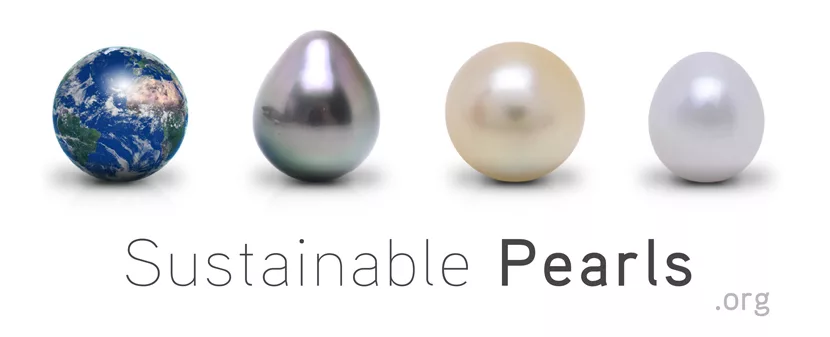Pearl farming:
From birth to pearl
Pearl farming
Wild spat collection
and hatcheries
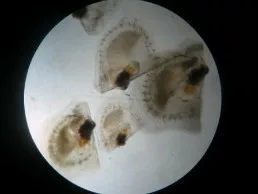
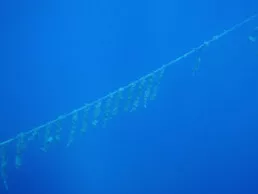
Juvenile pearl oysters can be obtained in two ways. One is to collect them in the wild, the other is through oyster breeding programmes in hatcheries. The condition varies in different countries. Whilst in French Polynesia nature permits Pinctada Margaritifera oysters to be collected at a juvenile stage (‘spat’) in the wild, in other areas where oyster reproduction is insufficient or qualities are not high enough oyster hatchery programmes are used.
In areas of Australia, adult wild oysters (of specific sizes) are collected under a strict quota system regulated by government. This ensures that the wild oyster stocks are not depleted and gives farmers access to strong adult oysters that can be used for cultured pearl production.
An oyster must reach a certain size before it can be operated in order to induce the birth of a cultured pearl. Pearl farmers must wait and care for oysters until they reach a grafting size. For Pinctada Margaritifera oysters in French Polynesia this time period usually ranges between 12 and 24 months.
Pearl farming
Grafting
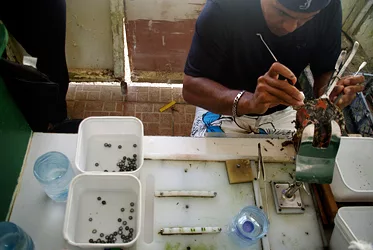
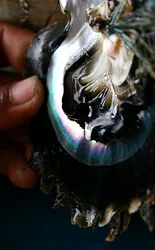
The operation that involves operating an oyster or mussel so as to induce nacre secretion and the growth of a cultured pearl is termed grafting. It is also called nucleation or seeding. This is a vital step in the cultured pearl farming process. This step requires great skill and hygienic conditions. The oyster is operated and a nucleus is inserted together with a piece of donor mantle tissue (the ‘saibo’, also called graft) into a part of the oyster called the pearl pocket. This operation is carried out by an experienced grafting technician. A critical step, it is one of the main factors that determine the quality of pearls that is subsequently produced.
In some cases, the implanted nucleus can be rejected by the oyster or falls out of the ‘pearl pocket’. If this happens, it can lead to the growth of beadless (without a nucleus) cultured pearls, also called Keshis in the trade. These types of pearls exist as by-products in all types of marine pearl oysters. Beadless cultured pearls are also increasingly been produced from the beginning now.
Pearl farming
Oyster care
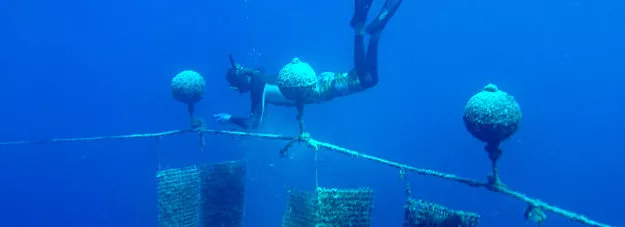
Producing high-quality pearls demands a long-term vision, sound environmental stewardship and responsible farming practices. Pearl oysters are remarkably sensitive organisms. Following the grafting procedure oysters are returned to thriving waters to offer them optimum growth conditions. The healthier an oyster is the less likely it will reject the nucleus, be affected by diseases or mortalities, or be affected by stress, and the more likely it will produce a higher quality cultured pearl. The environment plays a fundamental role in oyster health but so do pearl farming practices such as the stocking densities of oysters.
Oysters may be protected by nets or baskets to reduce predation. Furthermore, pearl oysters are regularly cleaned in order to remove biofouling (faunal and floral overgrowth on the oyster shell), which can hinder healthy oyster growth and pearl production.
Pearl farming
Harvesting pearls
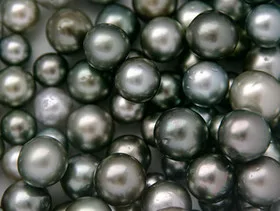
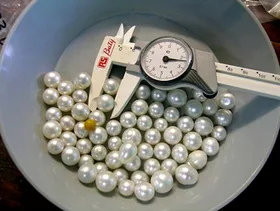
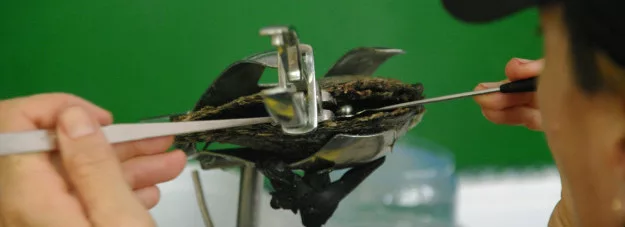
From the birth of an oyster larvae to the harvesting of a cultured pearl takes time. For Pinctada Margaritifera and P. Maxima oysters this is usually over four years. Once an oyster is harvested it can be grafted a second and even a third time. If a third generation cultured pearl is harvested from an oyster this organism can be 8-10 years in age. Only oysters that have produced pearls with good shapes, lustres and qualities will be grafted a subsequent time. A new nucleus the size of the harvested pearl can then be inserted, which means that each subsequent generation of pearl cultivated in an oyster will be larger than the previous. Whereas, the size of the pearl increases with each generation, it becomes more challenging to achieve the qualities and lustres of pearls formed in younger oysters.
Pearls are typically harvested in colder periods. This is because these are periods when oysters secrete thinner layers of aragonite (the nacreous mineral), which in turn results in better lustres. However, harversting periods vary greatly between different pearl farms and depend on the size of operations, water temperatures, and the current health of oysters.
